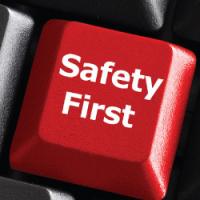- Posts: 350
- Thank you received: 11
Chemical Identification and Control
- Safety Toolbox Talk Webmaster
-
 Topic Author
Topic Author - Offline
- Administrator
-

The proper identification and control of chemicals is one of the most critical components of a safety system. This recent incident in New Hampshire highlights the importance:
May 5, 2011 - Seacoast Online, Elizabeth Dinan
PORTSMOUTH, NH — A hotel maintenance worker was transported by ambulance to the hospital Thursday after inadvertently mixing cleaning chemicals which, when combined, created a chlorine vapor.
The accident occurred at 10:12 a.m. at the Motel 6 on Gosling Road, said Assistant Fire Chief Steve Achilles. The call was initially reported as a hazardous materials incident which created medical problems for the hotel worker, he said.
Firefighters found the worker on the first floor where he was experiencing “non life threatening respiratory irritation,” said Achilles. An odor of chlorine was detected by firefighters wearing protective clothing who checked for toxicity and ventilated the area, he said.
Eighteen guests staying at the hotel were allowed to remain in their rooms after it was determined that the chemical vapor was isolated, said Achilles.
Firefighters determined the chlorine vapor was released when the worker poured a cleaning solvent from a larger container into a smaller one which contained residue of another incompatible chemical. The incident was “purely accidental,” said Achilles.
“Fortunately it wasn’t a large quantity,” he said. “A larger vapor cloud could have affected the whole building.”
The assistant fire chief said anyone who buys bulk and transfers chemicals into smaller containers should take precautions to ensure the small containers are clean and properly labeled.
Several factors could have been at play in this incident and the following will prevent this type of incident from happening to you:
- Always make sure chemical bottles, including secondary containers such as spray bottles and dispensers, are marked with the chemical contents with a clear and legible label.
- Ensure you use a HMIS, NFPA or similarly easily identifiable label that clearly denotes any hazards of the product within the container.
- Ensure you know about the various chemicals you utilize and check the original label or MSDS sheet to for information of reactivity with other substances.
- Once a secondary container is designated for a certain chemical, never utilize it for a different chemical component.
This rule also applies at home when you're cleaning up around the house:
- Do not mix bleach and ammonia.
- Do not mix bleach and acids (vinegar, some glass cleaners, some toilet bowl cleaners, lime/calcium/rust removers).
- Do not use two drain cleaners together, or use one right after the other.
All these combinations have the potential to create very hazardous vapors.
Today, check around your work area and ensure all your chemical bottles are marked and that you know the hazards associated with each. If you have questions or concerns, see the label, MSDS sheet or your supervisor.
Please Log in or Create an account to join the conversation.
